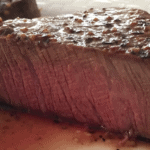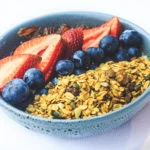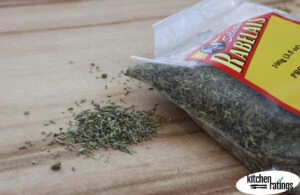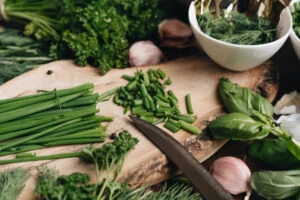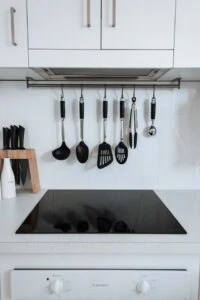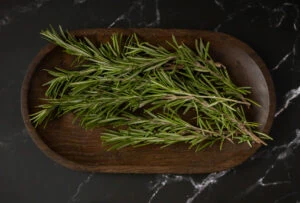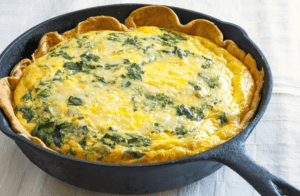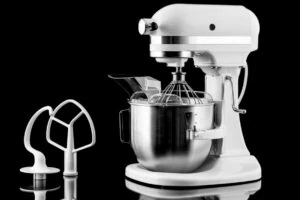If you’re thinking about learning how to juice, you’ve come to the right place. There are many benefits of juicing, and it’s often easier to get your vitamins and minerals by drinking them rather than eating them.
But juicing can seem overwhelming, and rightfully so. Not only do you have to choose the best juicer, but you have to learn the best recipes and combinations so that you don’t waste your time creating concoctions that aren’t worth drinking.
We’ve done the hard work, so you don’t have to. In this ultimate guide to juicing, we will start by giving you a list of the best juicers to choose from and finish with everything you’ll want to know about juicing.
Quick View
Top Recommended Juicer: Breville JE98XL Juice Fountain Plus
Best Budget Juicer: Mueller Austria Juicer
Best Premium Juicer: Oster JusSimple 5-Speed Juicer
Best Beginner Juicer: Hamilton Beach Juicer Machine
Best Runner-up Juicer: NutriBullet Juicer
1. Breville JE98XL Juice Fountain Plus
The Breville JE98XL Juice Fountain Plus is our top recommended pick for many reasons. We’ll start with the design of this centrifugal juicer first.
It has an extra-wide fruit chute that is three inches wide. This makes it easy to add fruits and vegetables directly to the juicer without chopping them into smaller pieces.
The next thing that we like about the design of the Breville centrifugal juicer is the built-in froth separator. Juicing certain fruits and vegetables will create froth, and sometimes you don’t want that froth to be included in your juice. Breville understood this concept and designed a built-in froth separator that will catch the froth and keep it from being included in your juice.
It also has two speeds which is nice for those times that you are juicing denser fruits or vegetables.
As far as performance goes, it is extremely fast and easy to clean. The pulp container is detachable, and all of the parts, except for the power base, are dishwasher safe. If you’re not juicing directly into a glass, the juicer includes a 35.2 fluid ounce juice container with a handle and spout for you to easily transport and pour when you’re ready.
It includes a one-year limited product warranty from Breville.
Pros:
- 3-inch extra-wide chute
- Built-in froth separator
- Two speeds
- Dishwasher safe
- Juice jug included
Cons:
- Slightly pricey
- May not be the best choice when juicing leafy greens
2. Mueller Austria Juicer
For our budget pick, the Mueller Austria centrifugal juicer isn’t lacking. It’s an affordable juicer that has two speeds for you to choose from. It also has a large 3-inch wide chute that makes it easy to juice large fruits and vegetables, including leafy greens.
While it doesn’t have a built-in froth separator, it is designed to keep fruits and vegetables from frothing, so your froth will be at a minimum with this juicer.
When you’re done juicing, all parts are dishwasher safe, making cleanup quick and easy. It is also designed with an anti-drip function that keeps your countertops clean while juicing.
Pros:
- Two speeds
- Large 3-inch wide chute
- Dishwasher safe
- Anti-drip function for keeping clean
Cons:
- Can be loud when juicing dense fruits and vegetables
3. Oster JusSimple 5-Speed Juicer
The Oster JusSpeed Juicer is the best premium juice extractor because of its five different speed settings and high-quality design. It’s similar to the Breville juicer on our list, with the main difference being there are five different speed settings on this juicer instead of just two.
It includes a 32-ounce juice pitcher with a froth separator that you can place onto the pitcher. If you’re juicing a small amount of juice for just one 8-ounce serving juice yield and juicing directly into your glass, the froth will not be separated. It is only separated when juicing into the juice container with the built-in froth separator. That’s the only downside we see to this juicer.
It is dishwasher safe and built with quality stainless steel parts that are safe and durable. It includes a ‘self-cleaning’ feature that helps keep the juicer clean, but it still needs to be cleaned.
Pros:
- Five speed settings
- 32-ounce juice pitcher with froth separator
- Dishwasher safe
- Extra-wide chute
Cons:
- Don’t rely on the ‘self-cleaning’ function to clean the juicer; it will need to be washed to be properly cleaned
4. Hamilton Beach Juicer Machine
If you’re just getting into juicing, this is the juicer for you. The Hamilton Beach Juicer Machine is the best beginner juicer for those just beginning their juicing journey.
It has a simple on and off switch, so you don’t have to worry about speeds or settings. The 3-inch chute lets you place large fruits and vegetables into the juicer. Just keep in mind that with only a one-speed setting, you may want to cut some of the fruits and vegetables down so that the unit produces juice instead of pulp.
The unit is also easy to clean with dishwasher-safe parts. It does not include a juice cup or pitcher. A 3-year warranty is included from Hamilton Beach.
Pros:
- Affordable
- Easy to use
- Large 3-inch chute
- 3-year warranty from Hamilton Beach
Cons:
- Does not include a juice cup or pitcher
5. NutriBullet Juicer
We couldn’t create the ultimate guide to juicing without including the NutriBullet juicer on our list. NutriBullet makes great products, and their juicer is no exception. It’s easy to use and wonderfully designed.
First, it has two different speed settings for you to choose from when juicing fruits and vegetables, making it easy to use. It also includes a 27-ounce sealing juice pitcher that allows you to store your juice for up to 48 hours in the refrigerator. This is great for meal prep or for planning ahead. Instead of getting up early in the morning and juicing, you can do it the night before.
The sealing pitcher lid also has a froth separator built into it, so you don’t have to worry about your juice being frothy.
All of the parts are dishwasher safe, and it includes a cleaning brush for easy and thorough cleaning.
Pros:
- Easy to use
- 27-ounce juice pitcher included
- The pitcher can be sealed for 48 hours
- Froth separator lid
- Dishwasher safe and easy to clean
Cons:
- Juicing carrots can be loud and strenuous
6. Amazon Basics Juicer
The Amazons Basic juicer is a basic juicer for under $50 and is a great budget option. It has two speed settings and a large chute that can fit large pieces of fruits and vegetables. For whole apples, you’ll need to quarter them to fit through the chute, as the chute is not quite wide enough to fit a whole apple.
It has an anti-drip spout, a large pulp container, and a small juice jug that holds a little more than two cups. For a budget juicer, it checks all the boxes.
The downside of this juicer is that it is difficult to clean. It’s not a juicer that you’ll want to sit to the side and clean later after juicing. Other than that, it’s a great juicer that is easy to use and has a good value. Plus, it comes with the Amazon Basics 1-year warranty limited warranty.
Pros:
- Affordable
- Easy to use
- Juice jug included
- Anti-drip spout
- Large pulp container
Cons:
- Difficult to clean
- Loud
How to Use a Juicer
If you purchase one of these juicers on our list, you’ll need to know how to use it. Using a juicer involves more than just learning how the juicer works. It’s about learning what types of fruits and vegetables can be juiced and how long the juice is good for.
We’ll cover how to use a juicer and then what you should look for in a juicer when you’re buying one.
What is a Juicer, and How Does it Work?
All juicers have the same general design. There is a chute, pulp container, a blade, and spout.
The chute is the tube where you will place the fruits and vegetables, one at a time, to feed into the blade. The blade chops up the fruits and vegetables to create pulp. The pulp is spun so fast using centrifugal force that the juice separates from the pulp and flows through the spout, leaving only the pulp behind in the pulp container. You know you have a good juicer when the pulp left behind in the pulp container is mostly dry.
(You don’t have to throw that pulp away either! Check out some of these great ideas for using the pulp from your juicer. You can compost the pulp or keep it to put in a smoothie or other recipes.)
A juicer will have a spout where the juice will flow from the pulp container to the container below. Many juicers have leak-proof or drip-proof spouts to keep the mess at a minimum.
Depending on how big the pulp container is will determine how much juice your juicer will produce and how often you’ll need to empty the pulp container while juicing. If you’re only making one small glass of juice at a time, you may not need to empty the pulp container, but if you’re preparing a large pitcher, you may need to empty the pulp container periodically during the juicing process.
Most pulp containers are dishwasher-safe. This makes cleanup quick and easy. Make sure the juicer you choose has a dishwasher-safe pulp container before you put it in the dishwasher. We know from experience that handwashing a pulp container can be time-consuming, especially if you have waited too long to start cleaning the pulp container.
It doesn’t take long at all for the sugars in the pulp to dry out, leaving you with a hardened, sticky mess. If the pulp container isn’t dishwasher-safe, you’ll need to hand wash it immediately so that the pulp doesn’t become hard and difficult to clean later.
Preparing the Fruits and Vegetables to Juice
Before you do anything, you need to thoroughly wash your fruits and vegetables. This removes any dirt, pesticides, or other particles that may have landed on your produce during the harvesting process.
Place the produce under running water to get all of the particles removed. You can also soak them in water with a little bit of vinegar. This will extract all of the dirt from the produce.
We recommend using as many organic fruits and vegetables as possible. Organic fruits and vegetables won’t have chemicals like pesticides that you may inevitably ingest when using non-organic fruits and vegetables.
Essentially, organic fruits and vegetables ensure that you’re getting the maximum amount of vitamins, minerals, and nutrients without the added chemicals.
Some fruits and vegetables may need to be prepared before you put them in the chute of your juicer.
Fruits and vegetables with peels that you would normally eat can be placed directly into the juicer’s chute. This includes apples, pears, cucumbers, tomatoes, and zucchini.
Fruits and vegetables with peels that you would remove before eating should also be removed before placing them into the chute of the juicer. This includes oranges, lemons, pineapples, mangos, watermelon, cantaloupe, and avocados.
Depending on the diameter of the chute, you may be able to place the entire fruit or vegetable in the chute without cutting it into smaller pieces.
Always make sure to remove the pits or large seeds from fruits or vegetables so that they don’t end up in your juicer. Fruits and vegetables like avocados and peaches that have large, hard pits can damage your juicer if they come in contact with the blades. Not to mention that crushed peach pits can turn into cyanide in your body if they’re ingested, so make sure you steer clear of them in your juicer!
Fruits and Vegetables You Can Juice
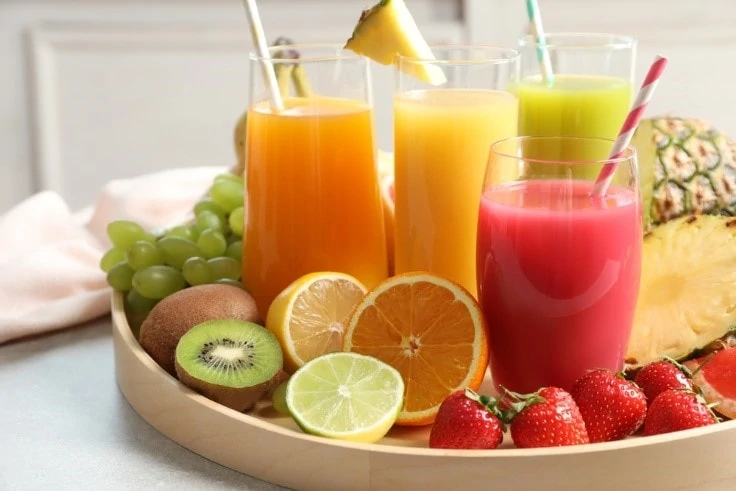
Fruits
- Apples
- Blueberries
- Cherries
- Cranberries
- Lemons (peel removed)
- Limes
- Grapes
- Oranges (peel removed)
- Peaches (pit removed)
- Pears
- Pineapple (peel removed)
- Pomegranate
Vegetables
- Beets
- Broccoli
- Carrots (peel removed)
- Celery
- Cucumber
- Kale
- Spinach
- Tomatoes
- Zucchini
Another tip to remember is that the chute size of the juicer may not be wide enough for a whole apple to fit through the chute and into the juicer. Make sure you only put fruits and vegetables through the chute that can fit.
Fruits and vegetables that are too big for the chute can break the chute or damage the unit, potentially injuring you in the process. Also, never use anything to plunge the fruits and vegetables through the chute outside of the plunger included with the juicer. This can cause you to damage or break the unit and is extremely dangerous.
Cleaning the Juicer When You’re Finished
When you’re finished juicing, you’ll need to clean the juicer. This includes the chute, pulp container, blade, and juice container if the juicer comes with one.
Most juicers contain dishwasher-safe parts, so you should be able to place all of these parts in the dishwasher to clean. However, make sure with the manufacturer that the product is dishwasher-safe before you place it in the dishwasher.
You may need to wipe down the base of the juicer, too. Some juicers come with a cleaning brush to help clean the base. If not, you can take any small cleaning brush and a cloth to wipe down any pulp or juice that has fallen into the base of the juicer.
Don’t wait too long to clean the juicer. When the pulp dries, it can become hardened from the sugar in the fruit and be difficult to clean from the juicer. Even if you’re not planning on putting the components in the dishwasher, you should at least let them soak in the sink so that the juice doesn’t harden and become sticky. Not only will this save you time cleaning, but it will also keep your juicer working properly.
What to Look for When Buying a Juicer
Just because two juicers may look similar, it doesn’t mean they are the same. These are the different features to look for when buying a juicer to help you choose which one is best for you.
Speed Settings
Different juicers will have different speed settings. Some of them may only be one setting, with an on/off switch, while other models may have multiple setting speeds.
There are benefits to choosing a juicer that has more than one speed. Multiple speeds allow you to juice certain fruits and vegetables more appropriately. For example, soft fruit and vegetables don’t have to be juiced at the same speed as denser fruits and vegetables. Juicing soft fruit and vegetables too forcefully may pulverize the produce instead of chopping it and forcing the juice out.
Firm produce like apples, carrots, and sweet potatoes juice best on a higher speed setting. This doesn’t mean that these types of produce can’t be juiced; it just means that it may not juice as efficiently as it would with different speed settings to choose from.
Chute Size
The diameter of the chute is another feature to consider when choosing the best juicer.
We recommend choosing a juicer with a chute size of at least three inches. This can allow you to place whole apples, pears, and other fruits directly into the juicer without cutting them into smaller pieces. Just make sure to never fit whole fruits or vegetables through the chute that do not fit. This can break the chute and injure you in the process.
Make sure that you only use the plunger included with the juicer. The plunger is what you will use to move the fruits and vegetables down the chute into the juicer to be chopped and juiced. Using an item too big for the chute can break the chute.
Additionally, if you use an item too long for the chute, it could come in contact with the blade and significantly damage your machine and injure you in the process.
Pulp Container Size
This feature is often overlooked when choosing a juicer. The size of the pulp container will let you know how much pulp it can hold before it needs to be emptied. Sometimes the pulp container of the juicer needs to be emptied multiple times during the juicing process, especially if you’re juicing a large pitcher.
Choosing a juicer with a large pulp container will keep you from having to repeatedly empty the pulp container when juicing large amounts of fruits and vegetables.
Dishwasher-Safe Parts
Another feature that you may want to consider is if the juicer has dishwasher-safe parts. This makes cleaning up quick and easy, which can be tricky when you have a juicer. Make sure the pulp container can be removed from the juicer and is dishwasher safe because this will be the component of the juicer that will need the most cleaning. If it’s not dishwasher-safe, you will have to manually wash the pulp container, which can be time-consuming.
Juice Container or Juice Jug Included
Not all juicers come with a juice container or jug, so you may want to choose a juicer that includes a container or jug if that’s important to you. One of the benefits of having a juice container or juice jug included with the juicer is that many of them have measurement markings to let you know how much juice has been produced.
Some juice containers also come with a sealable lid that allows the juice to stay fresh for up to 48 hours. This is a nice feature to consider if you plan to juice ahead of time or meal prepping.
Froth Separator
Froth is inevitable when you juice certain fruits and vegetables, like tomatoes and pineapples. There’s nothing wrong with froth other than it can take up extra room in your juice container. Froth may be more of a texture thing for you that you want to avoid. If so, you should look for a juicer that contains a built-in froth separator.
Froth separators are often built into the pitcher. This means that when you pour the juice from the pitcher into another glass, the froth separator will catch the froth and keep it from entering your glass of juice. A juice pitcher without a built-in froth separator will have juice and froth combined in the final product.
Price
We included the price of the juicer as the last option to consider because not all expensive juicers are good, and not all affordable juicers are bad.
On average, a good-quality juicer will cost around $100 and have most, if not all, of the features you’re looking for.
As you’ve seen on our list, the Amazon Basics juicer is less than $50 and includes some of the same features as the higher-end options, but there are a few key differences, like the size of the chute and how difficult the unit can be to clean.
These are all key features you need to consider, in addition to price, when choosing the best juicer for you.
What Are the Benefits of Juicing?
It’s often a misnomer that juicing is more beneficial than simply eating fresh fruit and vegetables. The vitamins and minerals that you get from juicing are the same vitamins and minerals that you get from eating.
However, juicing may be the best way for you to get the vitamins, minerals, and nutrients from fruits and vegetables, especially if you’re on the go. Your body can quickly and easily absorb the vitamins, minerals, and nutrients from the fresh juice rather than going through the digestive process of digesting the fibers of the fruits and vegetables.
You may not get all of the vitamins and minerals from the fruits and vegetables when juicing, but you will get some of them, which are better than none. It’s the fiber of the fruits and vegetables that are lost when juicing. To replenish some of the fiber that is lost when juicing, you can add some of the pulp to your juice.
Absorbing vitamins, minerals, and nutrients from juicing aren’t the only benefits of juicing. The nutrients have been linked to reducing the risk of cancer, removing toxins in the body, boosting the immune system, and improving many of the systems in the body, including the digestive system and circulatory system.
Make sure that you’re juicing a combination of fruits and vegetables so that your body absorbs a variety of vitamins and minerals and not just sugar. Only juicing fruits and vegetables high in sugar can increase your blood sugar levels and can inadvertently cause you to gain weight since your body can often store sugar and turn it into fat.
Even though they are healthy sugars, they are still sugar that your body is ingesting, so you’ll need to balance them with other vitamins and minerals. This is why it’s great to use greens in your juice. The taste of the fruits can mask the taste of the greens while you still get the nutrients from the greens. It’s the best of both worlds.
When Is the Best Time to Juice?
The best time to juice is in the morning on an empty stomach when you first wake up. This causes your body to absorb the maximum number of vitamins, minerals, and nutrients of the fruits and vegetables directly into your bloodstream.
Not only is this great for absorbing the nutrients, but it can also help you lose weight and improve your digestion. Your body can become full from the fresh juice and keep you full for longer during the day.
Best Juicing Recipes
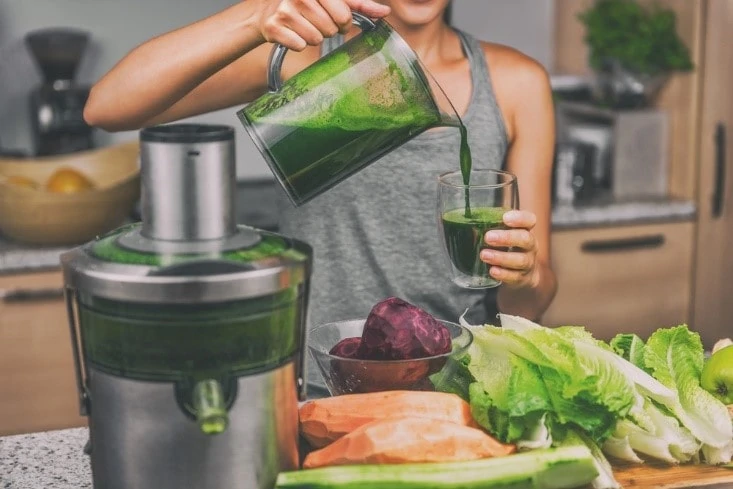
Green Juice with Ginger and Turmeric
- 1 cucumber
- 2 celery stalks
- 1 teaspoon ground turmeric
- 1 piece fresh ginger root, more if needed for taste
- 1 lemon, peeled
- Pinch of freshly ground black pepper
Mango Chili Juice
- 2 mangoes (peeled and cored)
- 4 carrots – scrubbed clean
- Salt
- Chili powder to taste
Zucchini Juice
- 1 apple
- 2 zucchini
- 4 kale leaves
- 1-inch piece of ginger
- ½ lemon (peeled)
FAQ
Can I use a blender for juicing?
A blender is for blending. There are no compartments separating the fibers and the pulp from the juice it creates. It all ends up combined in one container, and if you really wanted to, you could strain the juice from the contents of the blender, but that’s a lot of work.
A juicer is designed to juice. Period. So if you are considering juicing, we highly recommend choosing a juicer to do your juicing and not a blender or other kitchen gadget.
Do I need to choose a juicer that has multiple settings and speeds?
It’s not a requirement for your juicer to have different settings and speeds to perform correctly and efficiently. Still, it can help your juicing experience (the time it takes to produce juice and the amount of waste you create) if you have a juicer with multiple settings and speeds.
How long can I store the juice?
Juice is best consumed immediately after making it, but you can keep it in the refrigerator for up to 24 hours. Some models on our list include a sealed juice pitcher for you to keep your juice safe for 48 hours in the refrigerator. Just make sure that the juice pitcher indicates that it can be sealed and stored for up to 48 hours in the refrigerator.
Why is coconut not on the list of fruits to juice?
Coconut has a very low water content. This means that when it goes through the juicer, not much juice will come out, leaving you with a mess of coconut pulp in the pulp container.
Conclusion
We hope this ultimate guide to juicing has helped answer any question you may have had about how to get started juicing, when the best time to juice is, and what is the best juicer to use. Check out some more of our juicing articles where we compare masticating and centrifugal juicers and look at which juicers are the best for various types of produce.

